We use cookies to improve your experience. By accepting you agree to our cookie policy
Many of you in the CRPS community may be aware of the documentary 'Take Care of Maya' and/or the subsequent legal claim in the USA. This article is the full tragic story behind that documentary.
After years of legal wrangling, in November 2023 Maya Kowalski, aged 17, and her family finally heard the decision in their $220 million trial, commonly known as the ‘Take Care of Maya Trial’. Jurors found in favour of Maya and her family, ordering a total of $261 million which included $211 million in compensatory damages and a further $50 million in punitive damages for false imprisonment, battery, medical negligence and other charges such as the wrongful death of Beata and inflicting emotional distress on Maya and her mother.
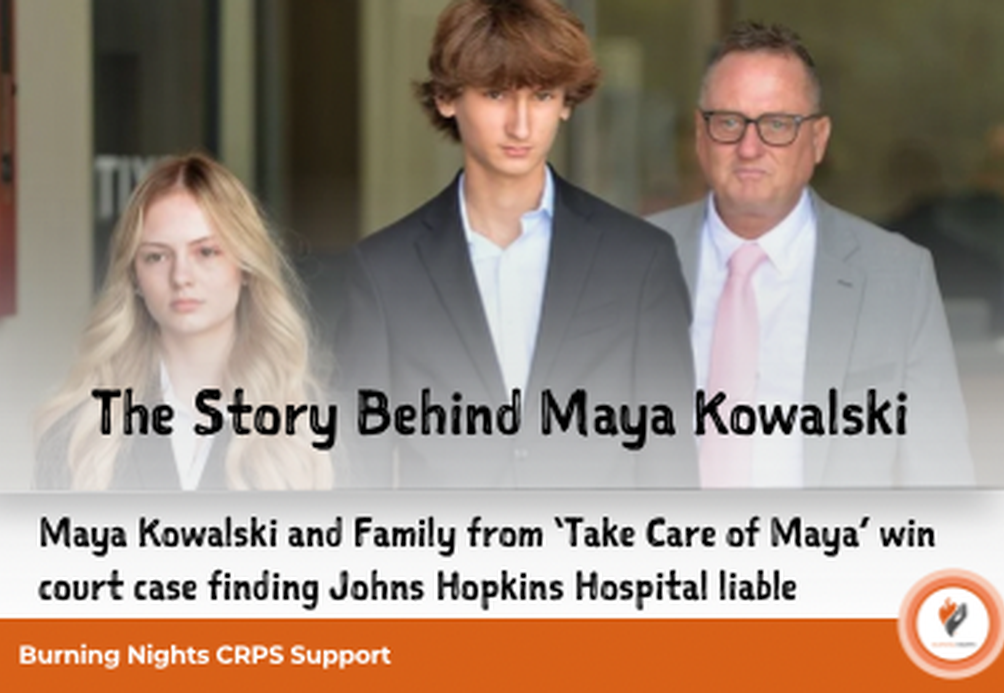
Please note this article contains sensitive information.
“I’m sorry but I no longer can take the pain being away from Maya and being treated like a criminal. I cannot watch my daughter suffer in pain and keep getting worse while my hands are tied by the state of FL and the judge.”
For those who haven’t been following this case, Maya Kowolski’s tragic and emotional story was the subject of a documentary on Netflix titled ‘Take Care of Maya’ that was released in June 2023 and was viewed over 14 million times in the first two weeks alone following its release.
Maya’s story all started back in 2015 when she initially developed a range of symptoms including trouble breathing, skin lesions, extreme tiredness, headaches, blurred vision, lower limb dystonia, and general chronic pain.
Maya’s parents, Beata and Jack, took Maya to see multiple doctors and specialists, to try and find the answers behind why Maya was having all these different symptoms. They never gave up, especially not her mum Beata. Eventually after seeing one of the USA’s top pain specialists, Dr Anthony Kirkpatrick, he diagnosed Maya in September 2015 with Complex Regional Pain Syndrome (CRPS).
Following her diagnosis, Maya tried numerous treatments under the supervision of her doctors including a 5 day procedure in Mexico that required her to be sedated and intubated to receive high-dose infusions of ketamine. This was successful and did alleviate the symptoms that Maya was having. But she did need to continue having regular lower doses of ketamine when she returned to the USA to keep her symptoms from returning.
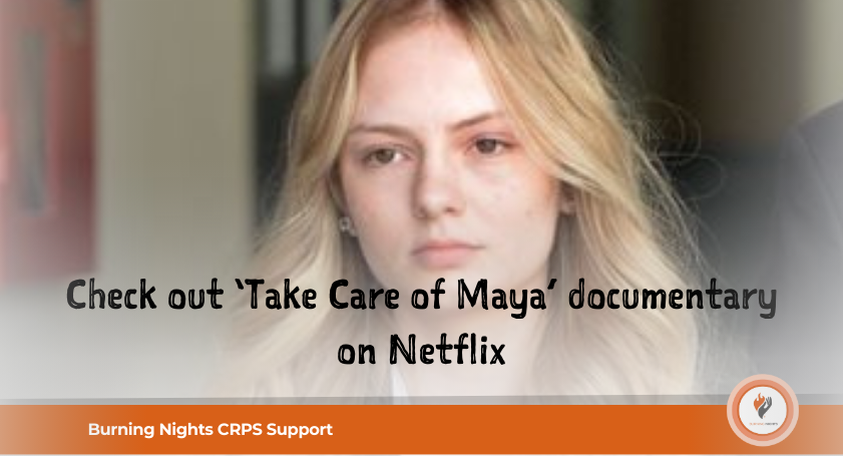
However the main problems began when Maya was just 10 years old and was taken by her parents to the paediatric emergency department at Johns Hopkins All Children’s Hospital, St. Petersburg, Florida (USA) with what they presumed was a flare up of her CRPS which was causing a severe stomach ache.
When they got to the hospital, Maya’s parents, Beata and Jack, explained to the staff in the Emergency Department that Maya also had Complex Regional Pain Syndrome (CRPS) and that it affected her feet and legs as well as having extreme hypersensitivity [Learn more about CRPS signs and symptoms via this link]. As Beata was a registered nurse, she knew and understood all about Maya’s condition and what had been successful and unsuccessful in the past.
Maya also needed the use of a wheelchair because of her CRPS as her feet turned inward and her legs couldn’t support her body. Like many people with CRPS, Maya had a burning sensation and pain in her legs and feet, and could barely walk. Early on in her CRPS journey, Maya had developed lesions on her legs which the ketamine coma had tried to address.
At the hospital, to try and figure out the reason for her abdominal pain, the nurse tried to perform an ultrasound on Maya, but her mother, Beata, insisted that the only way Maya would be able to handle the procedure was if she was given a ketamine infusion or a dose of ketamine. It was at this point, the nurse, who recognised the strength of the drug, made a decision to involve the social worker Debra Hansen in meeting with the Kowalskis.
The social worker found it highly unusual that Beata was requesting such a strong drug like ketamine for what she deemed was a ‘simple and routine procedure’. It was because this was seen as a ‘red flag’, the social worker filed a formal notice of child abuse or child neglect with the State. By the following morning, the Florida Department of Children and Families had dismissed her report due to insufficient evidence. But staff at the hospital were still concerned and persisted with this claim of child abuse / child neglect.
Later that day, an ICU doctor named Dr Beatriz Teppa Sanchez, telephoned Dr Sally Smith, who was the medical director of the child-protection team for Pinellas County, Florida, asking her for her expert opinion. Dr Smith is a doctor with more than 30 years of experience in child-abuse.
Dr Sanchez described Beata as ‘pushy’ and thought that the dosage of such a strong drug like Ketamine, that Beata was asking for her daughter, was large and excessive. The hospital staff also claimed that Beata was belligerent, demanding, and controlling, and that she continually tried to get the hospital to give Maya the ketamine. Dr Sanchez also told Dr Smith that Maya didn’t cry out as much when her mother was out of the room. However Dr Smith was far more concerned when she discovered that Maya was regularly undergoing ketamine infusions to manage her CRPS, and agreed with Dr Teppa Sanchez's assessment, that it was an unorthodox approach for treating CRPS in a child.
A second formal report was filed with the State but instead of parental neglect being cited, it was overtreatment. The report stated that Beata Kowalski “is believed to have mental issues,” and it continued to state that Maya was not in any pain but “Mom insists that Maya is in pain.” The DCF (Department of Children and Families) accepted the second report and then formally asked Dr Sally Smith to investigate the report further, but she was actually already on the case.
“Maya was not in any pain but Mom insists that Maya is in pain
The hospital and staff failed to believe that Maya had CRPS, nor believed that she needed high doses of ketamine to help manage her condition. They were accusing her of faking her condition. A judge ordered that Maya be taken away from the parents as not only did they believe Maya was faking her symptoms, but staff also believed her mum, Beata, was suffering from Munchausen-by-proxy, or medical child abuse.
Munchausen-by-proxy is a mental health condition that involves a guardian / caregiver, most typically a parent, making up or inducing physical or psychological symptoms in a child under their care. This results in the child receiving unnecessary and potentially harmful medical treatments and tests. This form of child abuse can have serious long-term effects on the child's physical and emotional well-being. Munchausen-by-proxy is now known as Factitious Disorder Imposed on another (FDIA) in the USA, or Fabricated or induced illness (FII) in the U.K..
Prior to this hospital admission, the Kowalski’s had visited over 30 medical providers to try to learn more about Maya’s condition and to try to manage it. Looking for a diagnosis or management options by visiting numerous health professionals is common for those with CRPS. The Kowalski's were no different. Beata, Maya’s mum, kept very detailed notes about her condition, symptoms and treatments that had been tried.
It can take months if not years to get a diagnosis of Complex Regional Pain Sundrome (CRPS) because the condition is so poorly understood and awareness is still very low. Sadly as an organisation we hear many people being accused of ‘making up’ or exaggerating their condition, or even accused of having Munchausen.
After the Johns Hopkins hospital requested Maya’s medical records, both doctors who had diagnosed and treated Maya contacted the hospital and not only explained her condition to Dr Smith but one specialist, Dr Kirkpatrick, had also cautioned her about accusing a family member of criminal conduct. In a memo he stated that “it could result in needless and permanent harm to the child and family.” The other specialist, Dr Hanna, also advised Dr Smith that Munchausen by proxy was a common misdiagnosis in CRPS cases. However neither of these warnings were ever included in the report.
“Even though we are discouraged, we will not settle”
The State issued a ‘shelter order’ following the accusation of Munchausen-by-proxy, which meant that Maya was to be kept in the hospital and her parents were stopped from seeing her. As the nurse went into Maya's hospital room to deliver the news, she found Maya’s dad, Jack on the floor, cleaning up after Maya's loss of bowel control. Unfortunately, Beata had already left for work, leaving Jack to handle the situation alone. The nurse delivered the heartbreaking news that their daughter was now in state custody, and Jack was advised to leave immediately. As he made his way out, Maya sat up in her bed, shouting out for her dad.
Over the next 3 months, Maya underwent a distressing experience when she was separated from her parents. According to their legal complaint, medical orders mandated that she was “isolated” and that visits from family be restricted. Although Maya was completely isolated from her family, she continued to report her high levels of pain.
Unfortunately Dr Smith still didn’t believe her CRPS and thought that it was something other than Munchausen-by-proxy. Therefore Dr Smith left instructions for staff to secretly record Maya to “try to catch her moving her legs."
One of the healthcare professionals texted Dr Smith after one visit to say “I watched her use her feet to push herself several feet in her wheelchair … She was distracted and I’m not even sure she realized she did it bc i didn’t call attention to it.”
Dr Smith responded to say “Fortunately at 10 years old she can’t perform the charade effectively 24/7. And doesn’t even know if she’s making ‘physiological’ mistakes. I’m coming to take some pictures of her ‘affected’ legs.”
Dr Smith and other staff would often refer to Maya by horrible names such as ‘ketamine girl’. After 2 months of isolation, the hospital paediatrician decided to change the diagnosis from Munchausen-by-proxy to factitious disorder. This meant that the doctors didn’t think it was her parents causing her condition but instead that it was Maya making it all up. Dr Smith even went further to say in her reports that the ‘strange bumps and lesions’ that carried on appearing on her legs, arms and forehead were all self-inflicted.
Eventually in December, the orders were changed to allow Maya to meet her father under very tight supervision, while her mother's visitation was entirely prohibited. Instead Beata was only allowed to phone or video call. However the hospital also started to impose their own restrictions on top of the Judge’s orders.
Maya’s social worker, Cathi Bedy, refused a number of Beata’s FaceTime/video calls, which went from daily to once a week. She wasn’t even allowed to see her mum for Christmas. Maya’s teachers were also refused and her education stopped, and the visit from family Priest was also stopped.
On top of everything that had been going on, Maya was also subjected to unwanted physical contact and placed under video surveillance. On one occasion, Maya was told by her social worker, Cathi, and a nurse, to take off all her clothes to take photos allegedly for a report. When Maya refused she was told that if she didn’t then she couldn’t go and see her mother at the courts. Instead the social worker forcibly removed her pants and shirt.
Maya later wrote: “I was crying and saying, ‘No, stop.’ But she wouldn’t stop. Bedy pinned me face down and either she or the nurse took photos of me in my training bra and shorts.”
Beata felt that as a result of what was happening to her daughter by the hospital that Maya’s condition had deteriorated significantly, and the complaint stated that “her symptoms worsened: her lesions reappeared, her legs atrophied, she regressed and became wheelchair-bound.”
At one court hearing, Maya had asked if she could hug her mum and even their lawyer asked if this would be ok. But the Judge simply refused.
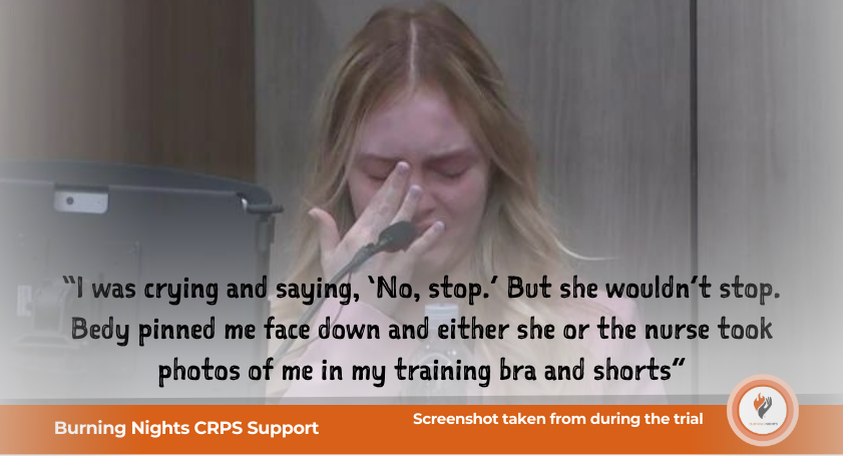
When Beata finally saw her daughter over 3 months after she had taken her to the hospital following her flare up, Beata said that Maya was using a wheelchair “and in worse shape” than when she had gone into the hospital three months earlier. After the Judge denied Beata a hug from her daughter, she became overwhelmed with grief. She cried a lot and lost so much weight. When she spoke to her daughter a day later, Maya remembered that her mum told her “I love you, and I'll see you tomorrow." Sadly Maya never saw her mum again.
On one particular day the family were due to go to a birthday celebration but Beata didn’t go because she told her husband she had a headache. When Jack came back he didn’t see Beata but thought she was sleeping in her son’s room. The next day Jack heard a blood curdling scream coming from the garage when a relative came by the house. He ran to the garage with their son to see his beautiful wife had taken her own life. Sadly this was just 2 days after being denied the hug on 8 January 2017, some 87 days that she had been without Maya. She was aged just 43.
In an email following her death, read: “I’m sorry but I no longer can take the pain being away from Maya and being treated like a criminal. I cannot watch my daughter suffer in pain and keep getting worse while my hands are tied by the state of FL and the judge.”
Beata simply wanted her daughter to be released by the hospital and have her CRPS properly treated. She believed and felt that this was the only way this could happen. On 13 January 2017, Maya’s dad, Jack finally regained custody of Maya.
Beata had never been diagnosed with any form of mental health condition and had even undergone a state ordered psychiatric evaluation to prove that she didn’t have Munchausen-by-proxy. The psychiatrist reported that there was “no evidence that would support the conclusion that Beata has falsified her daughter’s medical condition for any psychological purpose” and they concluded their report stating that “factitious disorder by proxy may safely be ruled out.”
When Maya’s dad, Jack, came to the hospital to tell her about her mother, she was moved to a small room where she met her dad, brother and the family priest. They cried together for an hour then Jack was forced to leave. In the court hearing Maya, wearing a necklace she had gifted to her mum, said “It was actually so unbelievably cruel, the amount of time they allocated for me to spend with my family after hearing such awful news.”
After Jack left a hospital doctor texted the ICU Paediatrician Dr Beatriz Teppa Sanchez to say “Ketamine girl’s mom committed suicide yesterday. Sorry to say my prediction was correct.” This means that the doctor assumed Beata had a mental health condition. Dr Sanchez sent a text back to say “Omg, this is terrible … I know we did the right thing. But this is really f***ed up. I feel bad.”
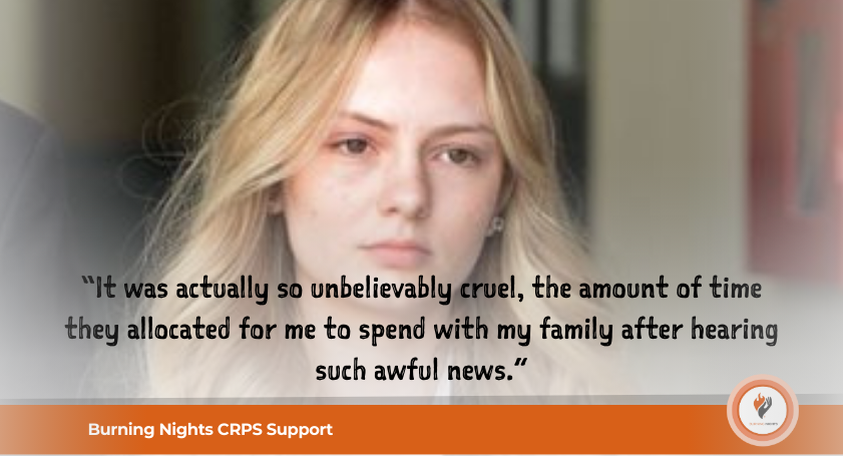
Maya, now aged 17 was a co-plaintiff in their recent court case in Florida, where she and her family sued John Hopkins All Children’s Hospital as well as the Department of Children and Families for over $200m after Maya’s mother took her own life when doctors at the hospital accused her of Munchausen-by-proxy.
The family alleged that the hospital’s treatment and accusations of child abuse against Beata, led her to take her own life in January 2017, as well as medical malpractice, battery, Maya’s false imprisonment, intentional infliction of emotional distress and fraud. They also stated that although the hospital claimed that Maya didn’t have CRPS, they continued to bill their insurance company for thousands of dollars for CRPS treatments.
The court case was emotionally and physically difficult on Maya, not only going through the continued questions but as she had to relive the terrifying experiences of the hospital as well as the sad death of her mother, Beata. In their opening statement one of the reasons they said they went through the mandatory reporting route was that Maya had been “given levels of medication they had never heard of before, that the literature did not support.”
During the court case, which lasted around 8 weeks, the Defendants also appeared to question the validity of Maya’s condition when she was unable to attend court. They showed photos of Maya at her Prom smiling and looking like she was enjoying herself. Maya explained to the court that although she may be smiling in the photos that they’re not proof she isn’t in any pain but that she often masks her pain and CRPS symptoms. She told the court that she “…cried for an hour to my dad before that picture was taken because of how bad my leg pain was…I wasn't sure if I was going to be able to go. That was my physical condition and mental condition."
The Defendants’ lawyers stated: “This is the life of Maya Kowalski today….We did not aggravate a pre-existing condition. She’s at her prom, she’s out in heels, has friends — it’s in complete contradiction to her testimony.” The Judge allowed the photos as evidence, even though Maya’s lawyers argued against this.
For those who don’t understand CRPS, the condition isn’t linear. So there will be ups and downs to everyone loving with CRPS. People don’t see the effort it takes to get dressed for a night out, not what happens after the event including flare ups, feelings of being wiped out, extreme tiredness as well as spikes in other symptoms of CRPS.
The family finally won their civil claim and were awarded $261 million in damages, which found that amongst other claims, she had been falsely imprisoned. This included $50 million in punitive damages for the false imprisonment and battery which was made after a second jury deliberation. Punitive damages are intended to punish harmful behaviour and deter similar future conduct.
When the judgement came in and was read out, Maya collapsed in tears. She said “It was about the answer, knowing that my mom was right,” she said. "For the first time, I feel like I got justice.” In her recent Instagram post she wrote “We are feeling so blessed! I will forever be grateful.”
The jury found that the emotional distress from being forbidden to see her daughter or hug her ultimately lead to her suicide in January 2017.
The hospital is now appealing those damages so the damages won’t be completely finalised until all the appeals processes have been completed. Unfortunately there’s no timeline for this. So we don’t know how long this will all take. The hospital lawyers have stated that the decision was based on “clear and prejudicial errors” and have actually accused Maya’s lawyers of misleading the jury.
Maya’s family’s lead lawyer in his closing statement said “All Children’s doctors wanted to punish a mother who dared to question their medical expertise ... What was the purpose of all this other than arrogance and the belief they could get away with it.”
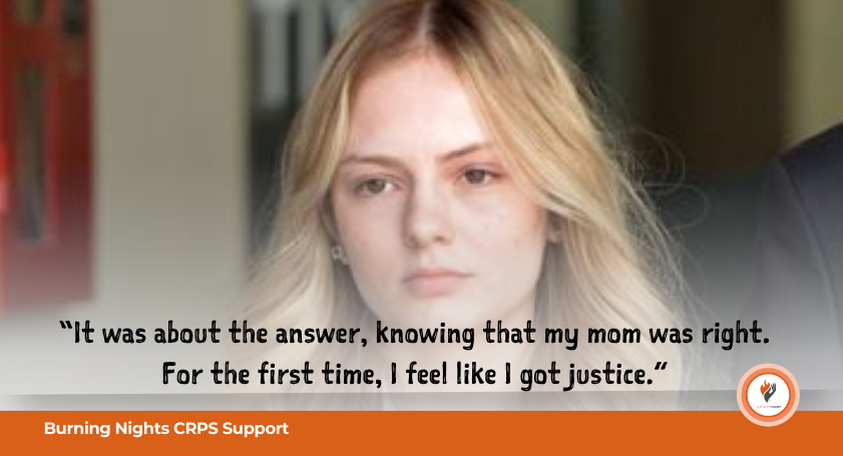
Following the civil trial, Maya Kowalski has now entered a criminal complaint involving sexual abuse, and an assault and battery between 8-13 October 2016. Maya can’t identify the person who assaulted her but she does have certain specific details about him such as his hair colour, height, weight and the clothing he had on when he came into her room.
She is alleging that someone who appeared to be a doctor went into her room without a female or a chaperone. The person knocked on her door once and came in. He came towards her, then pulled down her pyjamas and her underwear to ‘stare at [and] touch her private parts.’
Maya’s lawyer, Greg Anderson, said that she had suppressed this abuse until approximately 4 weeks ago. However Maya had sent some notes to both the psychiatrist from the hospital and then later on a second psychiatrist, Dr. Henschke.
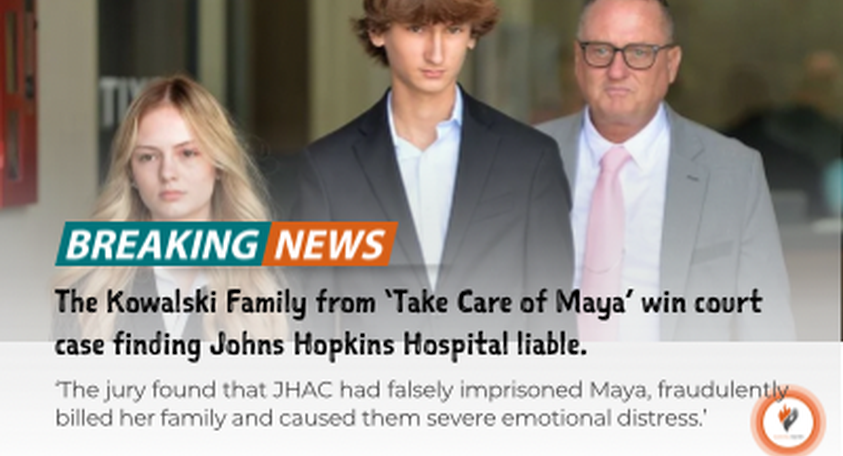
At the moment, we will have to wait and find out what happens with the Appeal from the civil claim because the hospital vehemently deny that their actions caused Beata to take her own life. They definitely intend to appeal “based on clear and prejudicial errors throughout the trial and deliberate conduct by plaintiff’s counsel that misled the jury.” Obviously we will also wait to hear about the sexual abuse criminal trial that has only recently been submitted as a formal complaint by Maya.
If you think you have symptoms of Complex Regional Pain Syndrome (CRPS), we suggest you ask to be referred to a pain consultant or a CRPS specialist centre. Please visit our page 'How to get symptoms assessed' to learn more. If you or a loved one have been affected by CRPS, please see our list of Support Services that Burning Nights CRPS Support can offer including online regular support groups, online live chat, online community forum and more.
If you have been affected by any of the issues in our article, please call the Samaritans on 116 123 if you’re in the U.K. Or call 988 Suicide & Crisis Lifeline if you’re in the USA. The Samaritans provides free and confidential emotional support to people in suicidal crisis or emotional distress 24 hours a day, 7 days a week.